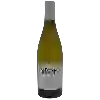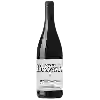
Winery Finca NarrazaCôtes du Roussillon Villages
This wine generally goes well with beef, veal or pasta.
The Côtes du Roussillon Villages of the Winery Finca Narraza is in the top 40 of wines of Côtes du Roussillon Villages.
Food and wine pairings with Côtes du Roussillon Villages
Pairings that work perfectly with Côtes du Roussillon Villages
Original food and wine pairings with Côtes du Roussillon Villages
The Côtes du Roussillon Villages of Winery Finca Narraza matches generally quite well with dishes of beef, pasta or veal such as recipes of fricandeaux german style, lasagna calabrese or veal meatballs with curry.
Details and technical informations about Winery Finca Narraza's Côtes du Roussillon Villages.
Discover the grape variety: Noah
American, resulting from a natural cross between taylor (Vitis Labrusca x Vitis Riparia) and Vitis Riparia, the seeds of the taylor then sown in 1869 by Otto Wasserzicher in Nauvoo, Illinois. Noah has been used extensively as a progenitor by hybridizers such as Baco, Bertille-Seyve, Castel, Gaillard and Seibel, the best known being baco blanc or baco 22A (folle blanche x Noah). In France, it is one of the six hybrids prohibited since 1935 (included in European regulations): clinton, herbemont, isabelle, jacquez, Noah and othello. Today, it has practically disappeared and can sometimes be found in private homes established in vineyards.
Informations about the Winery Finca Narraza
The Winery Finca Narraza is one of of the world's greatest estates. It offers 7 wines for sale in the of Côtes du Roussillon Villages to come and discover on site or to buy online.
The wine region of Côtes du Roussillon Villages
The wine region of Côtes du Roussillon Villages is located in the region of Côtes du Roussillon of Languedoc-Roussillon of France. Wineries and vineyards like the Domaine du Clos des Fées or the Domaine de Rombeau produce mainly wines red, white and pink. The most planted grape varieties in the region of Côtes du Roussillon Villages are Mourvèdre, Lledoner pelut and Pinot noir, they are then used in wines in blends or as a single variety. On the nose of Côtes du Roussillon Villages often reveals types of flavors of cherry, anise or black plum and sometimes also flavors of citrus fruit, tree fruit or fennel.
The wine region of Languedoc-Roussillon
Languedoc (formerly Coteaux du Languedoc) is a key appellation used in the Languedoc-Roussillon wine region of southern France. It covers Dry table wines of all three colors (red, white and rosé) from the entire region, but leaves Sweet and Sparkling wines to other more specialized appellations. About 75% of all Languedoc wines are red, with the remaining 25% split roughly down the middle between whites and rosés. The appellation covers most of the Languedoc region and almost a third of all the vineyards in France.
The word of the wine: Bacchus
Roman god of the vine and wine, often evoked to qualify everything that concerns the world of wine, and in particular its consumption. His name gave the adjective "bachique" which suggests the idea of celebration and conviviality.














